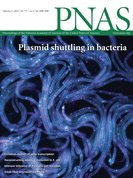Very early warning of next El Niño
- Josef Ludeschera,
- Avi Gozolchianib,
- Mikhail I. Bogacheva,c,
- Armin Bundea,
- Shlomo Havlinb, and
- Hans Joachim Schellnhuberd,e,1
- aInstitut für Theoretische Physik, Justus-Liebig-Universität Giessen, D-35392 Giessen, Germany;
- bDepartment of Physics, Bar-Illan University, Ramat Gan 52900, Israel;
- cRadio Systems Department, St. Petersburg Electrotechnical University, St. Petersburg 197376, Russia;
- dPotsdam Institute for Climate Impact Research, 14412 Potsdam, Germany; and
- eSanta Fe Institute, Santa Fe, NM 87501
-
Edited by W. G. Ernst, Stanford University, Stanford, CA, and approved January 9, 2014 (received for review December 6, 2013)
Abstract
The most important driver of climate variability is the El Niño Southern Oscillation, which can trigger disasters in various parts of the globe. Despite its importance, conventional forecasting is still limited to 6 mo ahead. Recently, we developed an approach based on network analysis, which allows projection of an El Niño event about 1 y ahead. Here we show that our method correctly predicted the absence of El Niño events in 2012 and 2013 and now announce that our approach indicated (in September 2013 already) the return of El Niño in late 2014 with a 3-in-4 likelihood. We also discuss the relevance of the next El Niño to the question of global warming and the present hiatus in the global mean surface temperature.
Footnotes
- ↵1To whom correspondence should be addressed. E-mail: john{at}pik-potsdam.de.
-
Author contributions: J.L., A.G., M.I.B., A.B., S.H., and H.J.S. wrote the paper.
-
The authors declare no conflict of interest.
-
This article is a PNAS Direct Submission.








